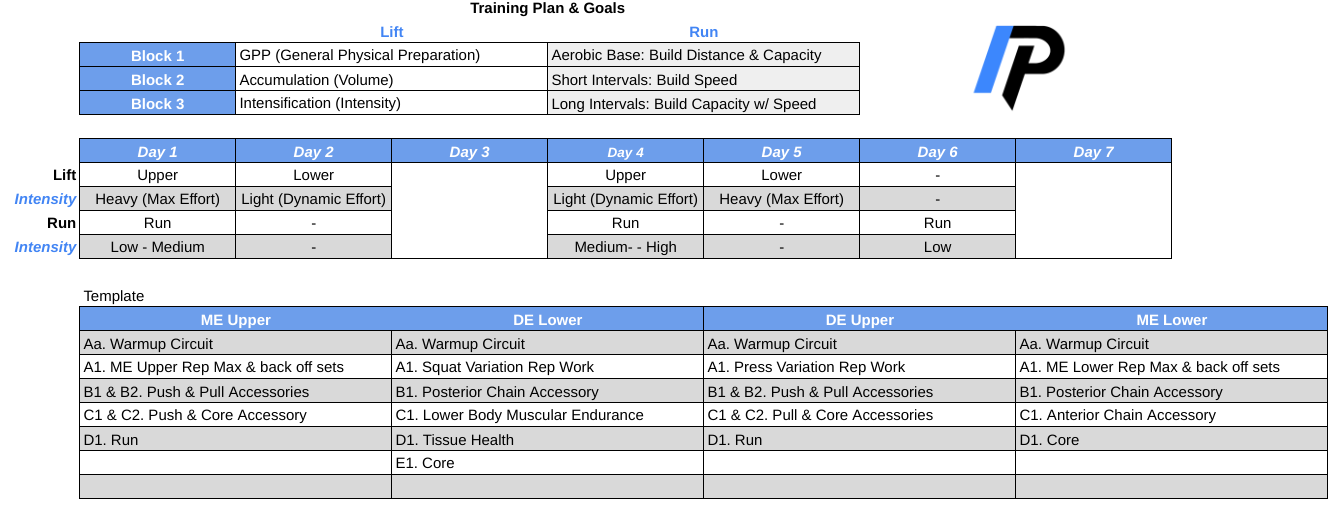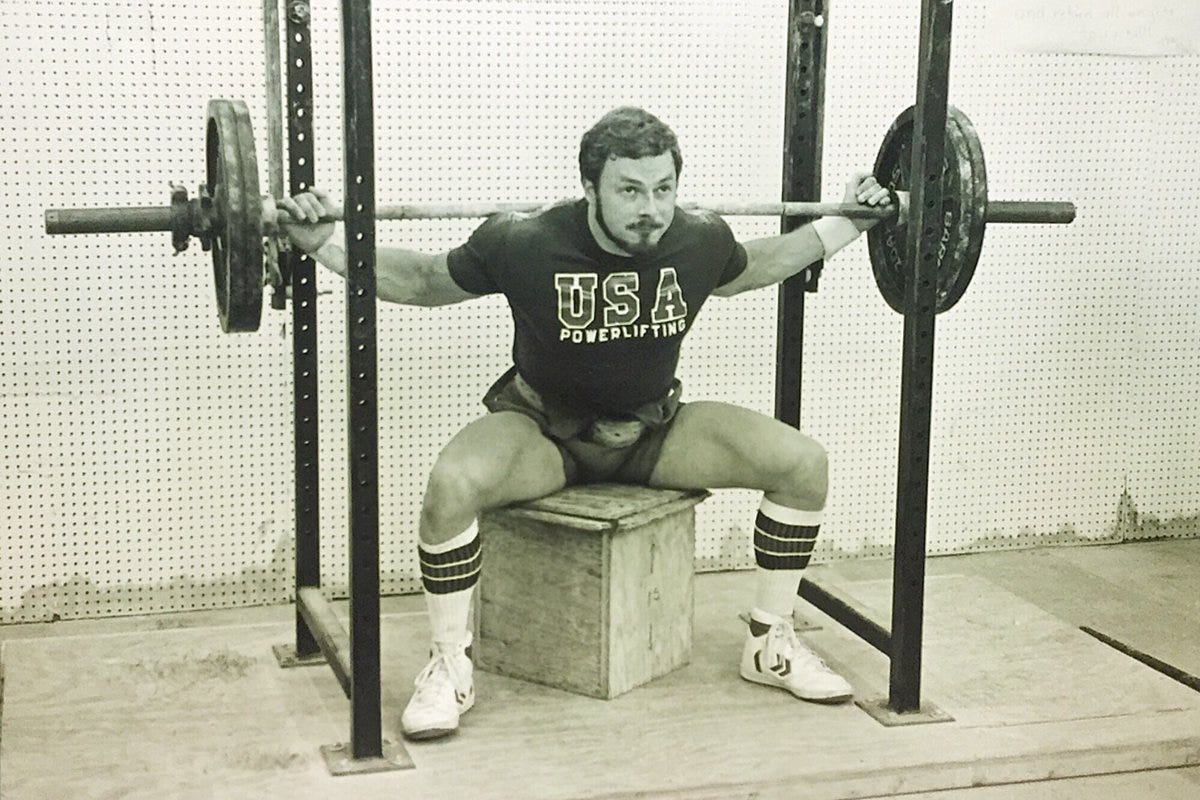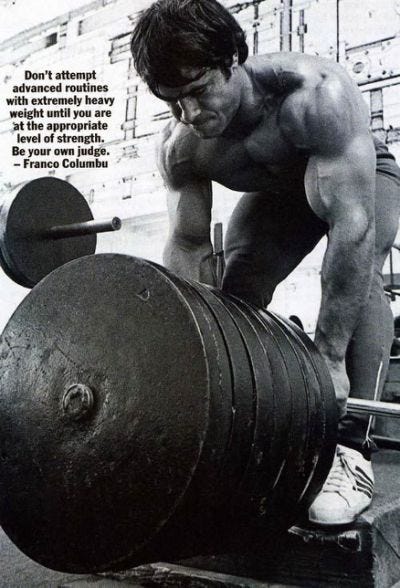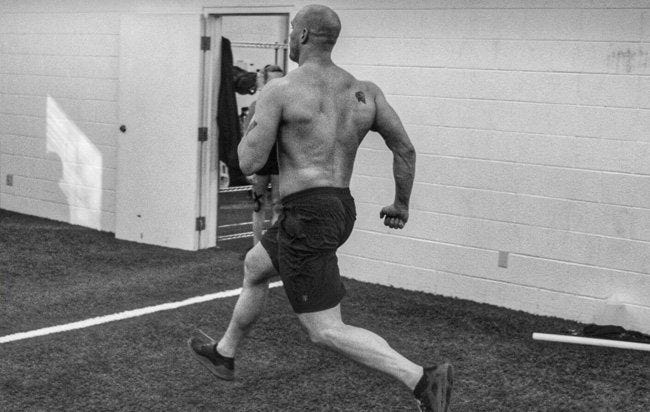Last week I introduced the meat leopard template so you could add some running into your training. This week we’re going to introduce an outline for each training day. When trying to achieve multiple training objectives you’re going to have to do more with less. This means only honing in 2 to 3 pressing movements for the week instead of doing 20 sets of chest on a single day. Keep this in mind when trying to fill in the template and achieve the goals for each block.
Training
There are 3 training blocks for the template: GPP, Accumulation, and Intensification. The GPP block should have more variability in exercise selection and a run or two in the week can even be replaced with biking, sled work, or a circuit. The idea behind the GPP block is to just build general fitness up a bit before we dive into some volume. You can this first block of training to experiment with some new exercises and methods. Something I stress to clients is that if they work out on their own one or two days a week is to try new things so we can eliminate things that don’t work for them sooner.
The Warmup Circuit
Simply pick 2-4 bodyweight or mobility exercises and perform. Move for 5 to 7 minutes continously, it’s not rocket science here. If you lack shoulder or T-spine mobility, congratulations, you now unlocked your daily emphasis for upper body warm-ups. Another way to warmup is to just do a flow of movements. Pick 5 to 10 movements and perform 1 to 2 rounds or until you feel ready to train. I would however add a movement that’s going to elevate the heart rate like kettlebell swings, pushups, jumps, sled work, or carries.
Bare Bones Warmup Structure
A1. Mobility Movement (Pick something that’s tight)
A2. Mobility Movement (Pick something else that can use work)
A3. Bodyweight Pump Movement (High rep pushups, air squats, lunges, etc.)
A4. Core Movement (Deadbugs, carries, hollow holds, hollow rocks, hanging leg raisesm etc.)
Repeat for 2-4 rounds
Max Effort (ME) & Dynamic Effort (DE) Primary Movement (A1)
This is where things get tricky because I don’t know you. I’m the girl at the party by the jungle juice and you’re too nervous to come talk to me (the comments and DM’s are open, slide in). For the most part, I would stick with hit a rep max of 3 to 5 reps on the max effort days followed by 3-4 back off sets with 10 to 15% less weight. The ME exercise can either be rotated weekly (change it weekly for 3 weeks then rotate back again) or repeated for 2 weeks. I wouldn’t repeat it for 3 weeks straight in this case unless you do something like 5RM week 1, 3RM week 2, and 1RM week 3 but I’d rather get a bit more volume in week 3 personally. For DE primary movements hit something between 5 to 8 reps for 4-6 sets. Accessories can bleed into higher rep counts like 10s, 12s, and 15s.
Basic Progression for Primary Movements (DE Day)
Week 1: 3x8 (24 total reps)
Week 2: 4x6 (24 total reps)
Week 3: 5x5 (25 total reps)
Aim to add weight each week for this progression then reset after 3 weeks and rotate another exercise in it’s place. This isn’t what you have to do, but this is one example i’ll be running with for the template to keep things neat.
Push & Pull Accessories
The push and pull accessories should primarily be composed of compound movements like rows, pulldowns, and presses. Isolation exercises like tricep extensions, curls, lateral raises, and others, can be added in the C1 & C2 series of Day 1 and 4. Stick to 3-5 sets of 8-15 reps for the accessories.
Your posterior chain is the low back, hamstrings, and glutes. Movements can include: hamstring curls (machine, sliders, ball, band, different angles), glute bridges, deadlift variations, hyperextensions / back extensions, good mornings, norid curls, or pull throughs. The anterior chain accessory will be anything for your quads such as: Split squat or lunge variation (recommended), leg press, hack squat, Goblet / Front Squat, sissy squat, reverse nordic curls, or leg extensions.
Tissue Health
Tissue health is anything that strengthens tendons and ligaments. This section is where you can add high rep (>30 reps per set) band exercises like hamstring curls, elbow flexion or extension, facepulls, and others. This section is also where isometrics can be added. Identify a weakness, ache, or pain that tends to come up for you. From there, select your tissue health movements. If your elbows hurt benching, select something like a high rep band bicep curl. If your knees hurt squatting, add isometrics like wall sits or band hamstring curls.
Running Programming
As you can see on the template there are three running intensities: Low, Medium, & High. Low intensity runs are zone two (roughly 60-70% heart rate) and meant to build aerobic endurance through increased mitochondrial and capillary density. Low days should not be super difficult, treat them as recovery days. The first block of this program should be all, or mostly, low intensity days. I like to begin with a 10 minute run when I begin running again. This is done at a nice and easy pace and I do it 2-3x a week. Each week gonig forward i’ll add 3-5 minutes of time to each session to build volume. Simple. This gives your tendons and ligaments (especially in the ankles and knees) time to adapt to running. Running is essentially a long duration extensive plyometric. You’re constantly rebounding off of your ankles. It takes a long time to build tendon and ligaments! Longer than muscles take to adapt.
The medium days will be at approximately 70-80% of heart rate max. A medium day could just be a run at a quicker pace or longer duration intervals. Examples of longer duration medium intensity intervals would be:
1.) 1:00 Run / 1:00 Walk x 5-10 sets
2.) 0.25 Mile Run / 1:00-3:00 Rest x 4-6 sets
I like the 1:00 run and 1:00 walk intervals a lot for medium intensity. Low intensity sessions will be long duration and low intensity, medium intensity days will be medium duration, and high intensity days will be high intensity and short duration. The medium intensity days should be 10:00-20:00 in total time and not lead to complete exhaustion. High intensity days on the other hand should gas you. A high Intensity day can include some of the examples below:
1.) 0.5 mile run / Rest 3:00 x 3
2.) 1 Mile Run For Time
3.) 0:15 Run / 0:45 Walk x 3-5 sets, Rest 2:00-3:00, then repeat for another 3-5 sets
4.) 0:15 Run / 1:00 Walk x 3-5 sets, Rest 2:00-3:00, then repeat for another 3-5 sets
5.) 0.25 mile run / Rest 2:00 x 4 sets
Again, begin block 1 of the meat leopard program with all low intensity days if you’re super deconditioned and maybe 1 medium day if you’re in decent shape but just haven’t run in a while. In block 2 and 3 you can use the high intensity days to crank things up a notch.
Final Note
Always keep in mind the intent for the training day. Low intensity running days should be low intensity. High intensity days should be high intensity. If your legs are sore, you may be slower. That’s totally fine. You should expect to run slow on low days and faster (but maybe not record fast) on high days. The intent matters most. Even if your legs are shot from a lower body day then just do your best to match whatever intensity is prescribed for the day and don’t worry about hitting a particular mile time or split. If you do find yourself being too sore, you’re either really out of shape, doing too much volume, or under recovering. Pro tip, in this case you’re always under recovered in some respect. If you have trouble identifying which boat you’re in, shoot me a message. See you guys next week.
Need help modifying this template for you? Schedule a call and we’ll set it up.








